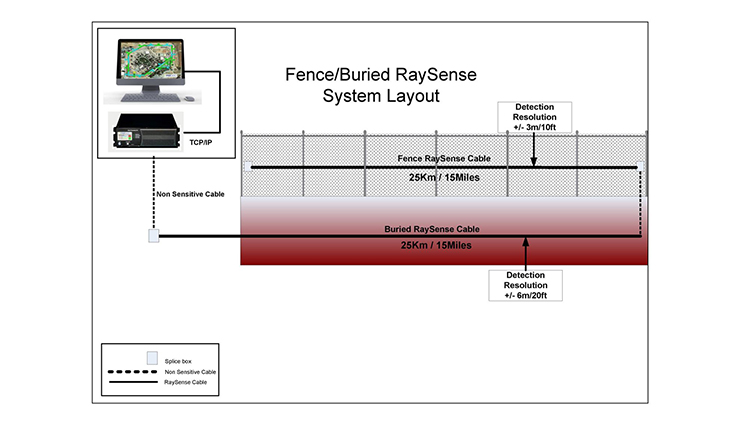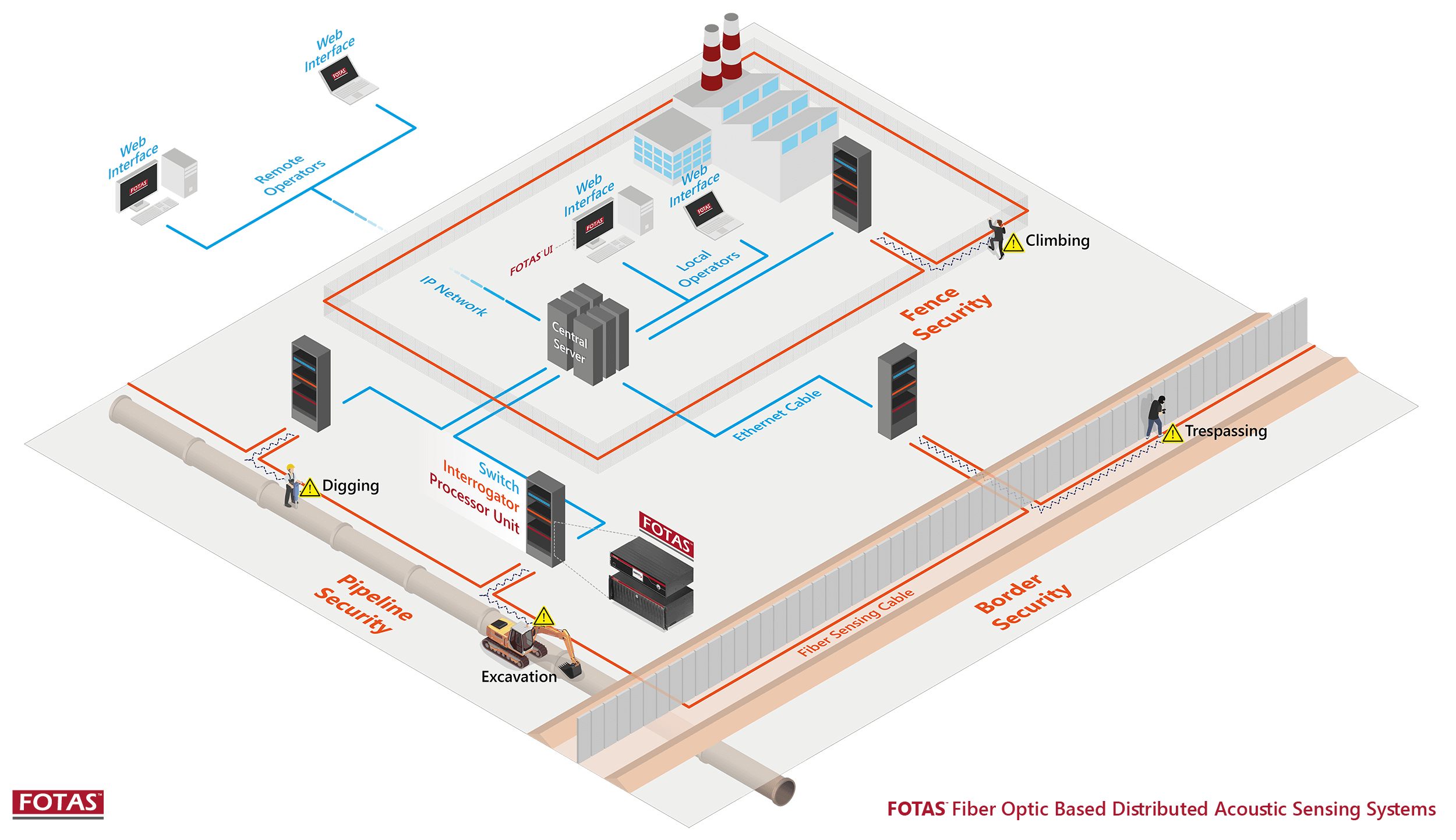Why Fiber Optic Protection Systems Are the Future of Protection
The change to fiber optic security systems notes a considerable innovation in the realm of defense, driven by their outstanding information transmission abilities and strength to exterior interferences. These systems not just promote faster and extra trusted interaction yet additionally offer a cost-effective option with minimized upkeep needs. As the landscape of safety and security advances together with emerging modern technologies such as AI and IoT, the potential for fiber optics to boost and redefine safety and security frameworks comes to be significantly noticeable. The effects of these advancements elevate crucial concerns regarding the future of safety actions and their efficiency in an ever-changing environment.
Benefits of Fiber Optic Systems
Among the primary advantages of fiber optic systems is their remarkable data transfer capability, which helps with the transmission of big quantities of information over lengthy ranges without considerable loss. This characteristic is specifically advantageous for safety applications that require the continual tracking and transfer of high-definition video clip feeds, sensor data, and various other crucial details. Fiber optics can accommodate the expanding needs of contemporary protection systems, guaranteeing that information remains intact and trusted.
In addition, fiber optic cords are much less susceptible to electro-magnetic interference, which can be a considerable concern in environments with different electronic tools. This resistance improves the integrity of the information being transmitted, consequently reducing the threat of information violations or system failures. Fiber optic systems are naturally a lot more protected than typical copper cables, as touching into a fiber optic line without discovery is exceptionally difficult.
The resilience of fiber optic cable televisions additionally adds to their appeal. They are resistant to environmental elements such as wetness and temperature level fluctuations, lowering upkeep prices and enhancing system durability. On the whole, these advantages position fiber optic systems as a durable and efficient selection for modern-day safety frameworks, guaranteeing reputable and safe and secure data transmission.
Improved Data Transmission Speed

The ability to send vast amounts of information rapidly promotes the smooth combination of high-def video clip feeds and advanced analytics. Security systems can now process and analyze information in real-time, enhancing response times and situational recognition. Additionally, fiber optic connections sustain longer transmission distances without deterioration of signal high quality, making them optimal for expansive security networks.
The increased rate of fiber optic systems not only enhances the effectiveness of safety and security operations but also minimizes latency. This is specifically essential in vital circumstances where timely decision-making can stop safety and security breaches or mitigate prospective threats. As companies remain to prioritize safety and performance, the demand for rapid and reputable data transmission will unquestionably solidify fiber optic systems as a cornerstone of modern-day safety and security infrastructure.
Resistance to Disturbance
Fiber optic safety systems consistently show outstanding resistance to electromagnetic disturbance, an essential benefit in environments vulnerable to electronic noise. Unlike conventional copper cables, which can be negatively influenced by magnetic fields, superhigh frequency interference, and various other types of electric disturbance, fiber optic wires make use of light to send data. This inherent residential or commercial property ensures that the signals stay clear and unaltered, regardless of bordering electronic activity.
Using glass or plastic fibers in fiber optic innovation creates see this page a barrier versus disturbance, permitting for trustworthy information transmission also in challenging circumstances such as commercial centers, urban locations with high digital website traffic, or locations near radio towers. This particular considerably decreases the chance of signal degradation or loss, making fiber optic systems particularly suitable for safety applications where honesty and accuracy of data are paramount.
Additionally, this resistance to disturbance enhances the general efficiency and reliability of safety and security systems, ensuring that tracking and sharp systems function effortlessly. In a globe where safety and security is increasingly threatened by sophisticated innovations, the durability of fiber optic systems attracts attention as a crucial feature, reinforcing their status as a necessary part of modern-day security infrastructure.
Cost-Effectiveness With Time
Significant cost savings can be accomplished with time with the execution of fiber optic security systems. While the preliminary financial investment might appear higher compared see page to conventional copper-based systems, the long-lasting monetary advantages become obvious via minimized functional and maintenance costs (fiber security). Fiber optic cables are inherently extra long lasting and much less prone to ecological factors, which translates to lower substitute and repair service expenses over their lifespan
Furthermore, fiber optic systems call for less power to run, which better reduces power prices. Enhanced information transmission capabilities permit less repeaters and amplifiers, minimizing tools financial investment and simplifying setup procedures. The scalability of these systems also adds to cost-effectiveness, as organizations can increase their security facilities without sustaining considerable extra expenditures.
One more factor to think about is the raised efficiency in surveillance and reaction capacities that fiber optics provide. Improved real-time information transmission can lead to quicker incident response times, potentially mitigating losses and obligations associated with safety and security violations. Altogether, the long-term benefits of fiber optic safety systems not just warrant the initial expense yet additionally position them as a financially prudent choice for companies looking for robust security options.

Future Technologies in Safety And Security
Progressing modern technologies are set to reinvent safety and security systems, incorporating expert system (AI) and maker discovering to improve danger discovery and feedback abilities. These technologies will permit protection systems to analyze large quantities of information in real-time, recognizing patterns and abnormalities that suggest prospective dangers. This aggressive method will certainly make it possible for much faster decision-making and more efficient incident reactions.
Furthermore, the incorporation of the Web of Points (IoT) is leading the way for interconnected protection devices, offering detailed surveillance and monitoring. Smart sensors can pass on details concerning ecological changes, while automated notifies can inform safety and security personnel right away of dubious tasks.
In straight from the source addition, the evolution of biometric modern technologies will certainly additionally boost security mechanisms. Face recognition, finger print scanning, and retina recognition are ending up being much more advanced, providing layers of authentication that are challenging to bypass.
Verdict
To conclude, fiber optic protection systems stand for a considerable improvement in protection modern technology, using exceptional data transmission speed, resistance to electro-magnetic interference, and long-lasting cost-effectiveness. As the demand for innovative security options continues to expand, the assimilation of fiber optics with arising innovations such as AI, IoT, and biometrics will additionally enhance protection facilities (fiber security). The mix of these technologies will ensure a more safe and secure and responsive atmosphere, solidifying optical fiber as a cornerstone of future safety and security systems